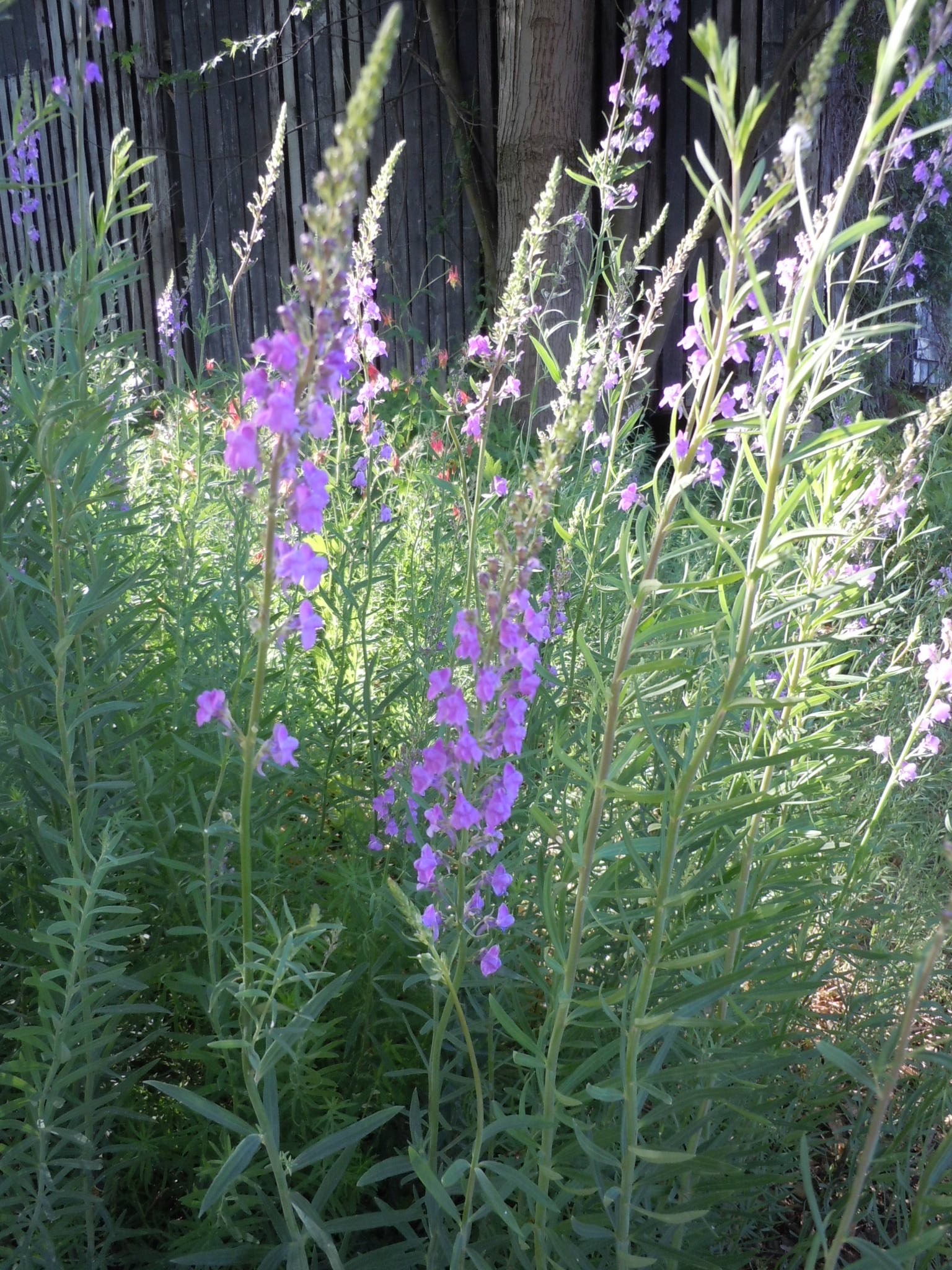Description
Violet racemes all summer through fall
Violet racemes all summer July to September
Violet racemes all summer through fall
Dark pink-purple flowers from late spring to mid-summer
Size: 32” x 18”
Care: full sun to part shade in moist well-drained soil
Native: Europe
Wildlife Value: a favorite of Bumblebees
In Greek mythology Silene was a companion of Bacchus who was covered with foam. Dioicus means that male and female plants are separate. Described by 1750’s. Grown in American gardens since 1800’s
OUT OF STOCK
Atop a mound of spatula-shaped, crinkled leaves with scalloped edges rises a bounty of 4 to 5 inch tall spikes, each crowned with a hoard of tiny fuchsia-colored trumpets blowing their horns “look at me” in early to mid-summer.
Size: 4-8" x 8-12" spreading slowly by rhizomes
Care: sun to part shade in moist well-drained soil
Native: South Africa
Wildlife Value: Deer resistant. Attracts small bees and butterflies
English adventurer and naturalist William John Burchell (1781-1863) scoured South Africa from 1803 to 1815 collecting more than 50,000 specimens packed in 48 crates. In places unexplored he found insects, animals, fish and unknown plants, this being one. Although he published two volumes of his exploration, he did not finish the last, third volume, leaving another to write the botany. Premier English botanist George Bentham (1800-1884) took up the task authoring Labiatarum Genera et Species, published in 1834. He wrote the first published description and named this tiny plant with outsized charm.
Short purple spikes in June-July
Size: 3” x 24”
Care: sun in well-drained soil
Native: Europe & Western Asia
Size: groundcover, rock garden, herb, fragrant foliage, thyme lawn
Thymus from the Greek word for “odor” due to the plant’s fragrance. Ancient Greeks made incense with thyme. This species since at least 1753. Acc’d to Parkinson in 1640 this remedied hysterics in women. Wm. Robinson wrote,”nothing can be more charming than a sunny bank covered with” Thymus serpyllum. LH Bailey extolled it as “prized as an evergreen edging and as cover for rockwork and waste places …The leaves are sometimes used for seasoning.”
OUT OF STOCK
Outfacing, white, waxy cup-shaped flowers resembling single roses in late winter, evergreen leaves.
Size: 12-20” x 12”
Care: part shade in moist well-drained soil
Native: rocky places in Europe
Awards: Received Royal Horticultural Society Award of Merit.
The name Helleborus is Greek from hellein meaning “to kill” and bora meaning “food” referring to the plant’s poisonous qualities if placed in food. This species is ancient – known as long ago as 300 BC in Greece where it “purged and cured the mad or melancholicke daughters of Praetus with the roots thereof.” (Parkinson, 1629) Grown in the Eichstätt Garden, the garden of Johann Konrad von Gemmingen, prince bishop of Eichstätt in Bavaria, c. 1600. In Middle Ages petals thrown on floor to drive out evil and ward off power of witches. English herbalist John Gerard (1545-1612) strangely recommended it for curing poisoned animals. Sorcerers made themselves invisible by tossing the powdered plant in the air.

